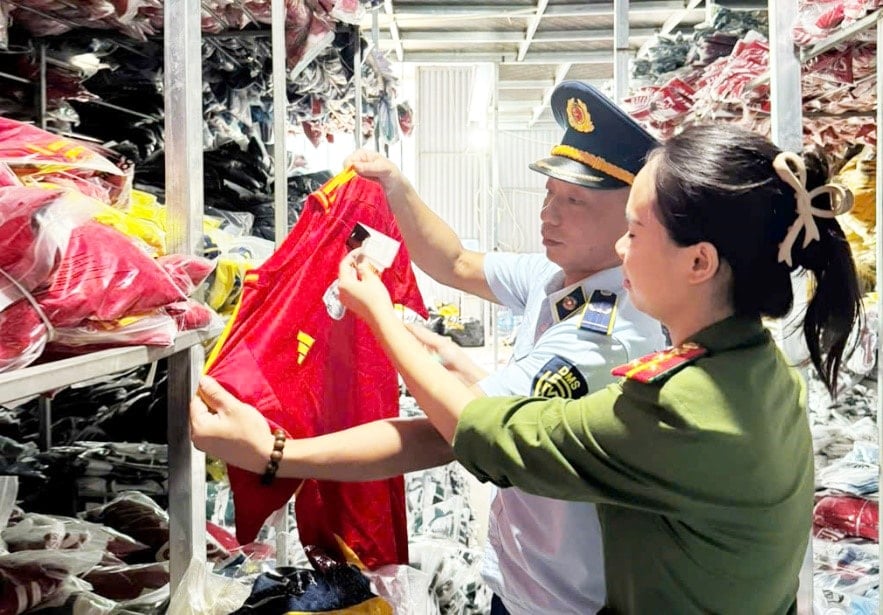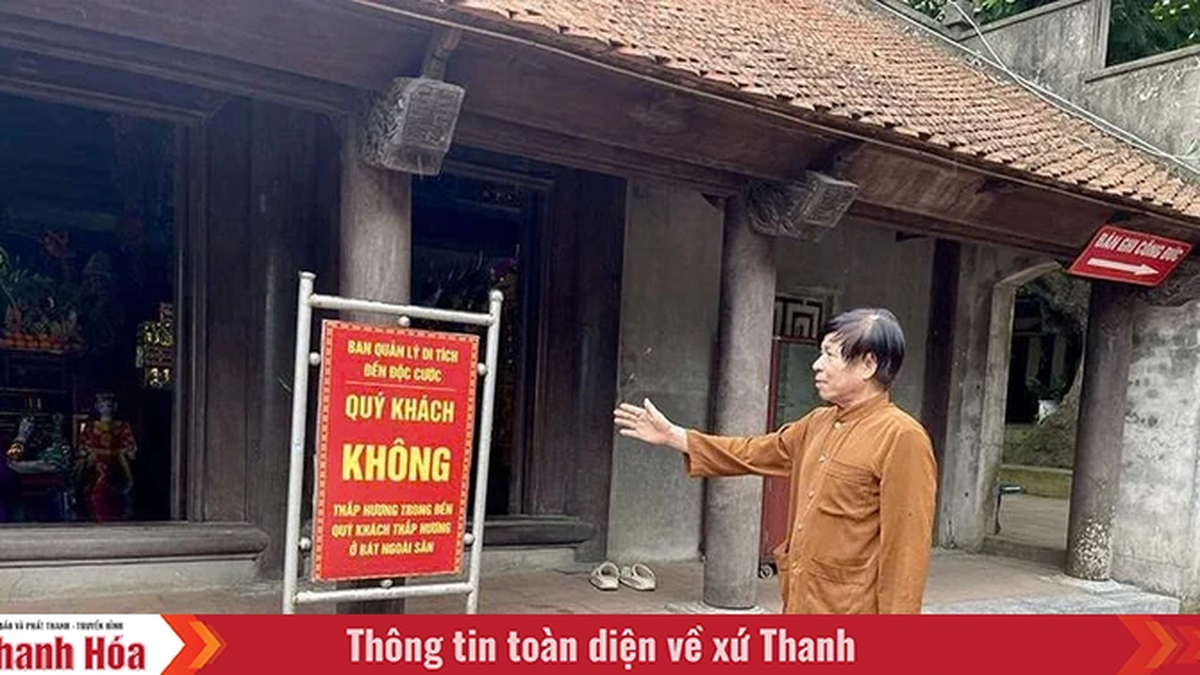In markets, agencies, and small retail stores, traders are not interested or do not know how to trace the origin of the goods they sell; while consumers are mostly unaware of this activity and do not know how to do it even if they want to.
Authorities inspected and seized a shipment of counterfeit clothing at a business establishment in Phu Dien ward.
Strange concept
When it comes to tracing the origin of goods, many sellers said they never thought about it before it was a mandatory requirement. Therefore, apart from supermarkets and reputable brands that trace goods, markets, agents, retail stores... do not have any traceability methods.
At Cau Giay market (Cau Giay ward), reporters of Hanoi Moi Newspaper investigated and asked many vendors about the above issue and received head shakes. Many vendors seemed surprised because for many years they had never traced the origin of their goods and no customers had requested this.
Ms. Le Thi Hoa, who sells imported fruits at the gate of Cau Giay market, said that although all the goods she imports have full invoices and labels, there are no instructions on checking the origin of the goods. According to Ms. Hoa, it is very difficult to carry out mass traceability in stores when the authorities do not make it mandatory.
Similarly, at Dong Xa market (Phu Dien ward), traders all said that most goods such as confectionery, household goods, food... do not have a way to trace the origin of the goods. In fact, at stalls selling household goods, dried food, vegetarian food, confectionery, fruit..., the products do not have QR codes or scan codes to enter the National Origin Tracing Information Portal like in supermarkets. Only a few types of fruit are introduced as imported goods with labels, but it is impossible to determine whether they are genuine goods or not.
At a shop selling dishes and household appliances in Nghia Tan market (Nghia Do ward), Ms. Nguyen Thu Huong, a resident of Yen Hoa ward, said that there were some products with reputable brands being sold in the market, but when asked how to check the origin, the seller replied "no". "If the products are not required to have QR codes or warranty stamps, barcodes... to identify the brand, then counterfeit goods can disguise themselves as genuine goods to deceive consumers", Ms. Huong said.
Tighten to control quality
In the context of counterfeit goods becoming a dangerous problem, if goods are not controlled by consumers, the consequences will be more serious. Therefore, the authorities need to issue mandatory regulations on the form of tracing the origin of goods by pasting QR codes on the packaging to better control product quality and avoid counterfeit goods. Through scientific and easy traceability, consumers can quickly verify the origin of goods.
Ms. Vu Thuy Lan (Hoang Mai ward) suggested: "Tracing goods using barcodes and QR codes on product packaging helps people easily determine the expiry date, place of manufacture, inspection... From there, each person can directly monitor the source of goods, and can also complain about the product to the manufacturer or management agency if the quality is not suitable. However, the creation of QR codes must be controlled and periodically inspected by the authorities".
In fact, product traceability is not a new issue. There are organizations and businesses that have implemented it, but in general it is still very fragmented, separate and there is currently no consistent, synchronous mechanism. Tracing has been implemented in many places, but it is still formal, lacking depth, not showing the supply chain, and there is no unified identification code nationwide, and the data is not centralized.
Head of Technology Department (National Data Association) Nguyen Huy said that currently in the market, many businesses have applied traceability of goods with their own solutions for products. However, these solutions are not authenticated by authorities, nor are they based on uniform standards for the whole country, or internationally connected. Therefore, Mr. Nguyen Huy said that it is necessary to implement the application of technology for traceability of goods during the period when the whole country implements digital transformation as a comprehensive policy, with synchronous management from central to local levels.
According to the National Data Center ( Ministry of Public Security ), in the first 5 months of 2025, the authorities handled more than 40,000 cases of smuggling, counterfeit goods, and poor quality goods with a total fine of up to 6,500 billion VND. This figure shows that tracing the origin of goods is extremely urgent. It is time to tighten the management of goods quality using technology to create a healthy business environment and protect the rights and health of consumers.
Source: https://hanoimoi.vn/truy-xuat-nguon-goc-hang-hoa-can-la-quy-dinh-bat-buoc-bao-ve-quyen-loi-nguoi-tieu-dung-709197.html





















































![[Maritime News] More than 80% of global container shipping capacity is in the hands of MSC and major shipping alliances](https://vphoto.vietnam.vn/thumb/402x226/vietnam/resource/IMAGE/2025/7/16/6b4d586c984b4cbf8c5680352b9eaeb0)












































Comment (0)